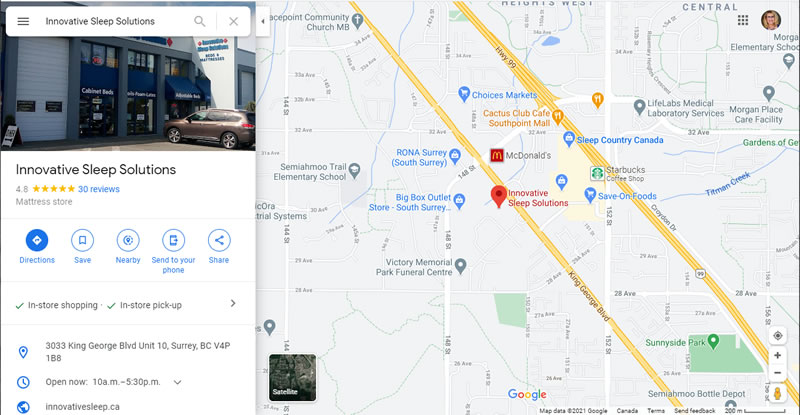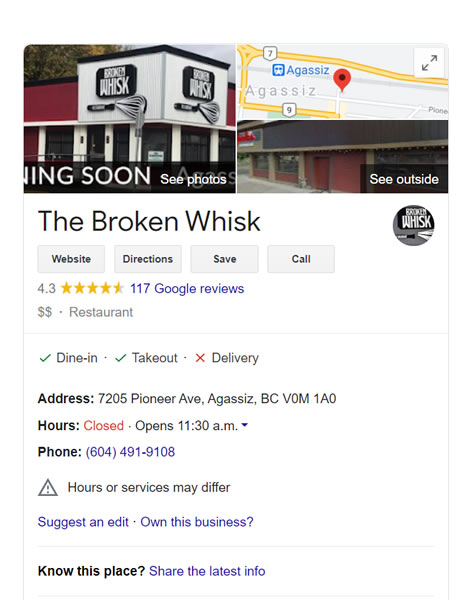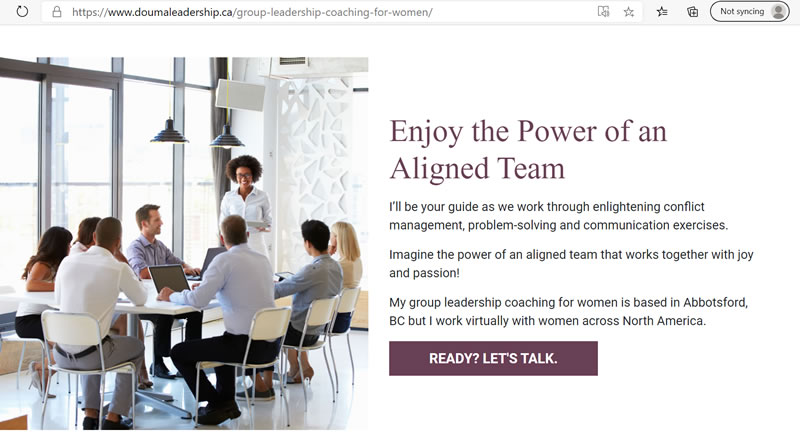7 SEO Strategies to Optimize Your Local Business Website
In the past year (has it really been a year since we first went into COVID-19-mode?!), we’ve heard a lot about the #ShopLocal movement. Especially over the holidays, people were focused on buying gifts within the community to support small businesses.
The Retail Council of Canada’s (RCC) found that 90% of Canadians intended to shop local during the 2020 holiday seasons, and 83% preferred to purchase items that were also made in Canada.
Now that we’re past the holiday season, it’s important for small business owners to look ahead and think about ways to keep promoting themselves locally in 2021.
It’s so crucial to focus your marketing efforts on getting local website traffic if you run a store-front business or offer a service that is within a specific geographic area.
Fortunately, there are a number of things you can do to increase your visibility and reach your target audience. To help you achieve your goals in 2021, here’s how to rank locally:
1. First, make a list of the regions that you want to target.
For example, if you live in the Lower Mainland of BC, you may want to incorporate keywords such as “Langley”, “Abbotsford”, “Surrey” and so on in your website content.
Include your city, the nearest major metropolitan area and your province. Now, start creating long-tail keyword phrases for each of these. Let’s use the example of “interior design.” Instead of just using that keyword phrase, you could target “Surrey interior design” and “BC interior designers.”
2. Write a web page or blog post dedicated to each local keyword phrase.
Now that you have your list of keywords to target, it’s time to start writing!
To optimize your website for local search, sprinkle the keywords and geographic locations throughout your website copy so the search engines will keep you top of mind in their search results. Remember not to stuff your content with keywords.
See how we used localized keywords and broader geographic locations for our client Yvonne Douma.
3. Regularly write and post new local content.
Adding new content to a website, especially as a value-adding blog post, is essential for every website.
When you create new location-based content with your keywords, it makes what you’re saying even more valuable—whether it’s a press release about something you are doing in the community or a review of a new local service.
4. Add your business address at the footer of your website in text.
If you’re wondering how to rank locally, don’t forget to include your address on your site! This not only acts as a clue that shows Google you are a local business, but it also shows your website visitors that they are in the right place.
Even better: embed a dynamic Google Map to help customers find your location, display your location with images and build trust and credibility.
READ: Understanding These 3 Trends Will Help You Design the Best SEO Strategy for 2022

As we look towards the future of SEO, we need to understand how it’s changing, what trends are shaping it, and how we can use this information to design SEO strategies that are up-to-date, agile, and effective.
Read about our top three trends in SEO to help you design your best SEO strategy in 2022.
5. Utilize Google My Business.
Google My Business helps small business owners stand out in the search engines. Whether through a search result or a maps query, over five billion searches are made globally each day through Google.
That means that a large audience can find your product or service quickly and easily. Not only does it increase your visibility, it’s also a free way to optimize your website for local search.

Google My Business listing and site location for one of our clients, Innovative Sleep Solutions in Surrey BC, who have since retired and closed their business.
6. Take and share local pictures.
Think beyond text as you optimize your website for local search. Take photos of your business to showcase what you have to offer and share authentic photos instead of stock photos.
Make a point to take pictures of your business doing things within the community. Then, name these pictures when you post them to your website or blog with file names including your local keyword phrases.
Why? Because all of the images used on your website then have localized keyword phrase file names and alt tags.
So, if someone goes into Google Photo Search and looks for “best interior designer in Surrey,” if you have a photo with that file name, your image will come out at the top.
7. Leverage the power of review sites.
Create free business accounts with some of the big review sites like Yelp, Google, Yellow Pages, Insider Pages, Angie’s List, etc. and encourage your customers and regulars to write reviews about your business.
Good reviews can go a long way with both your customers and the search engines.

One of our clients, The Broken Whisk in Agassiz BC has very happy customers!
As you optimize your website for local search, it’s key to also focus on off-site methods to boost results as well—but that’s another conversation! If you’re not sure how to rank locally using off-site methods, contact us.
Start by taking the time to review your website and follow these SEO tips and you’ll be well on your way to getting more loyal customers throughout 2021 and beyond!
To your business success,
Susan Friesen
P.S. If you liked the article, you might want to subscribe to our newsletter. We publish tons of valuable content to help you learn more about marketing, and subscribing is the best way to ensure you don’t miss out. Additionally, if you’d like to learn more about building a search engine optimized website, click here for our free website guide.








